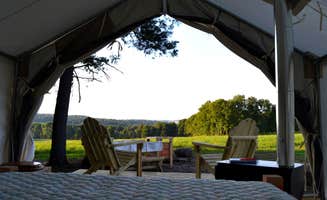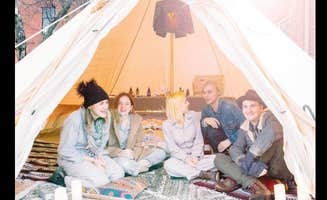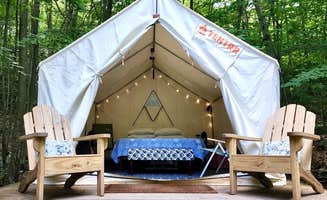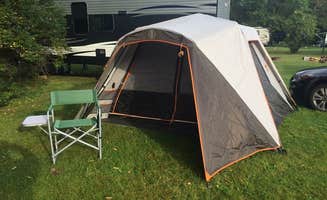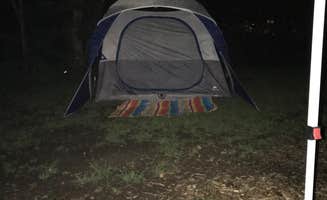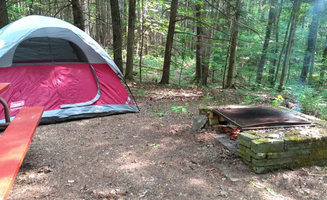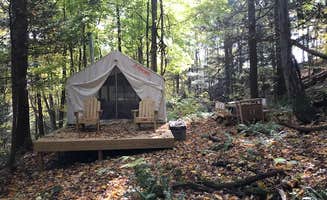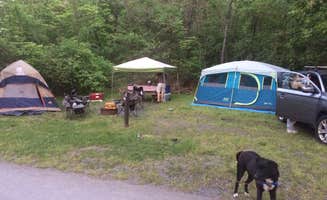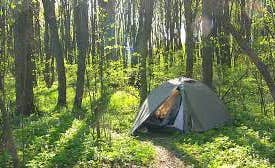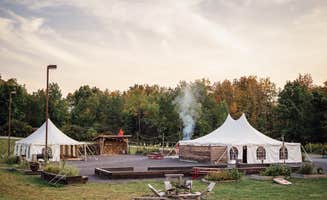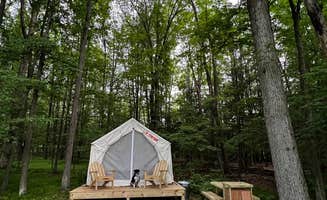Camping spots near Groton, New York encompass a range of terrains from creek-side retreats to forested glens. The region features an average summer temperature of 75°F, with weather cooling rapidly after Labor Day. Many campgrounds in the area follow similar seasonal schedules from May through October, with availability often limited during peak summer weekends.
What to do
Swimming in natural pools: At Fillmore Glen State Park Campground, visitors can escape the summer heat in unique natural settings. "Kids loved the park and swimming in the waterfall beach," reports Charyssa G. The park's swimming facilities integrate directly with natural features, creating memorable experiences beyond standard pool swimming.
Hiking gorge and rim trails: Robert H. Treman State Park Campground offers trail systems of varying difficulty, making it suitable for different hiking abilities. "Don't let the beginning steps fool you, the rim trail can be very strenuous," warns Matt G. Many trails follow dramatic landscapes with stone walls and forest sections.
Water recreation: Opportunities for boating and fishing exist on nearby Cayuga Lake and smaller waterways. "Highlight is the tubing, kayaking and canoeing right on the river that leads to the campground," notes Rennie S. about Lighthouse Landing Campground. Some campgrounds provide rental equipment while others require bringing your own gear.
What campers like
Clean shower facilities: Many campers specifically mention shower quality as a deciding factor in their camping experience. "The showers are awesome," remarks Shari G. about Fillmore Glen State Park. Several campgrounds now offer free hot showers, though quality and cleanliness vary significantly between locations.
Swimming areas: Taughannock Falls State Park Campground features a structured swimming area that appeals to families. "The swimming area goes to 12 feet deep and has a dock to jump off of," explains Barbara S. The controlled environment provides safety while still connecting with natural surroundings.
Spacious sites: Site sizing varies considerably between campgrounds, with some offering significantly more space than others. "Site 54 at Robert H Treman is very large, flat, nonelectric and well shaded with areas of sun," reports one camper. Premium sites often fill quickly, especially those with both shade and sun exposure.
What you should know
Site privacy considerations: Privacy between campsites varies dramatically between campgrounds and specific sections within them. At Buttermilk Falls State Park Campground, "There is literally no privacy between any of the sites," according to one reviewer. Noise travels easily in open field camping areas.
Road conditions: Access roads to some campgrounds require attention, especially after rain. "Be careful! The roads are in dire need of grading and new gravel," warns Mindie C. about Pinecreek Campground. Some campgrounds have steep entrance roads that can challenge larger vehicles.
Bathroom maintenance: Facility upkeep varies widely between campgrounds and even between loops in the same park. "Bathrooms were a little on the rough side," notes Jason about Pinecreek Campground, while others report "very clean" facilities at other locations. Mid-week stays typically feature better-maintained facilities.
Tips for camping with families
Playground access: Yellow Lantern Kampground receives high marks for kid-friendly activities. "Tons of activities for kids to do. I still remember from when I was little kid having a great time and still have gone again as an adult," shares Kelly J. Most playgrounds are centrally located, allowing parents to monitor children from nearby campsites.
Swimming safety: Natural swimming areas often have depth changes and currents not found in pools. "Watch the kids close. There are some pretty steep drop offs," advises Kim B. about Fillmore Glen Park. Most swimming areas operate only during daylight hours with some requiring lifeguards to be present.
Bike-friendly environments: Many campgrounds feature loop roads ideal for children learning to ride. "Kids get to ride their bikes all over and feel safe," notes Stephen B. about Pinecreek Campground. Some parks implement quiet hours that limit bike riding in evenings.
Tips from RVers
Site selection strategy: Watkins Glen State Park Campground presents navigation challenges for larger rigs. "The roads within the campground were kind of tight to get through with trees and curves," reports Laura L. who visited in a 30-foot motorhome. Corner sites often provide more maneuvering room but may experience more foot traffic.
Electric options: RVers should verify amperage availability before booking. "Electric sites are not the best though. Rocky and unlevel. Not made for large campers," warns Victoria about Robert H. Treman State Park. Some campgrounds charge additional fees for electricity on stays longer than one week.
Water and dump facilities: Most established campgrounds provide water hookups and dump stations, though positioning can be inconvenient. "Some sites have shared fresh water hookup between the sites," notes Jennifer D., highlighting the need to bring extra hose length to reach connections.


